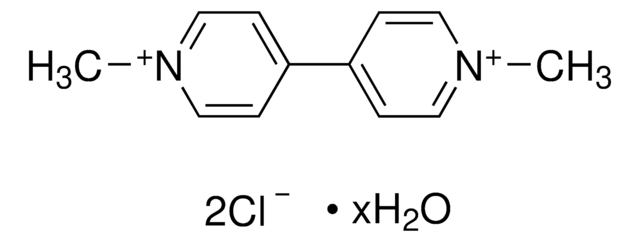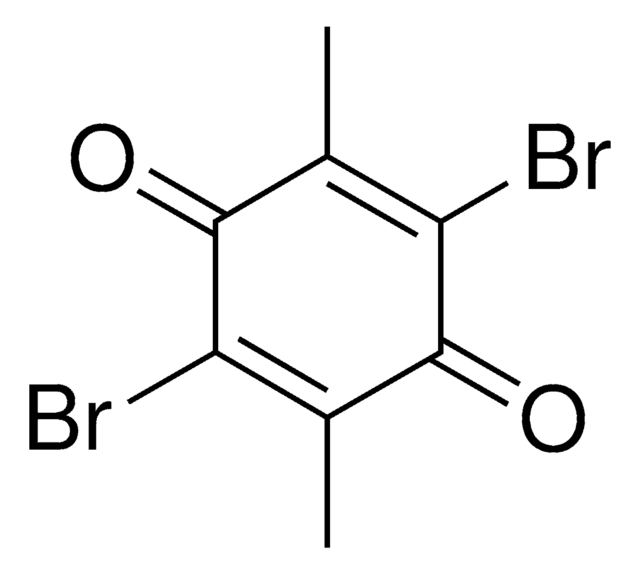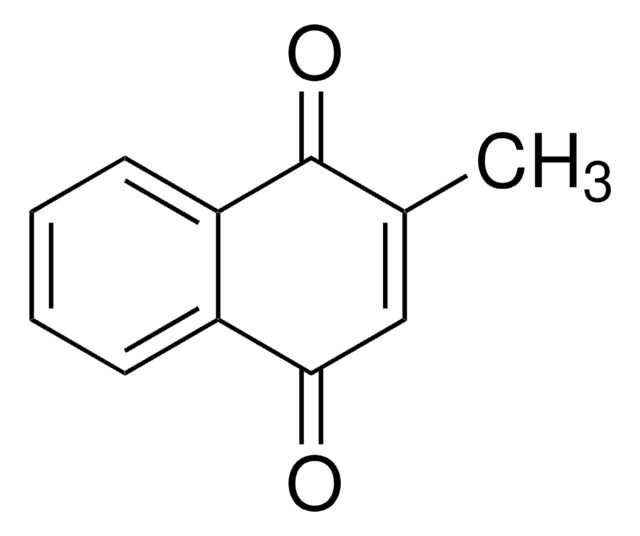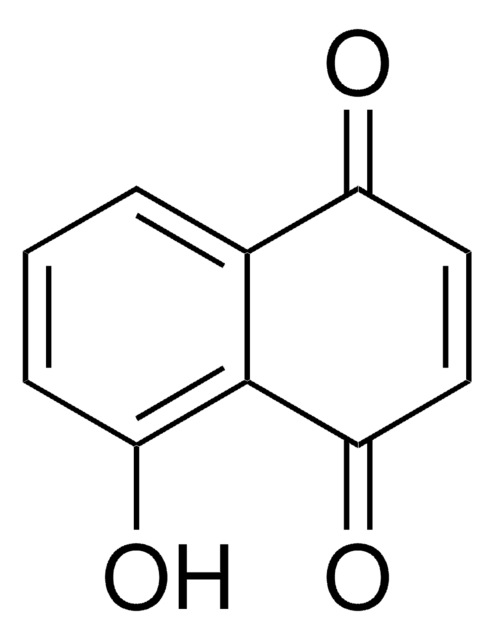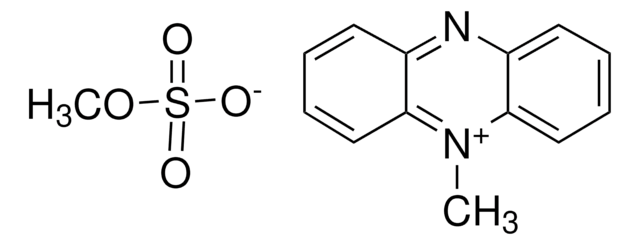271993
2,5-Dibrom-6-isopropyl-3-methyl-1,4-benzochinon
Synonym(e):
2,5-Dibrom-3-methyl-6-isopropyl-p-benzochinon, Dibromthymochinon
About This Item
Empfohlene Produkte
Form
powder, crystals or chunks
Qualitätsniveau
mp (Schmelzpunkt)
70-72 °C (lit.)
Anwendung(en)
diagnostic assay manufacturing
hematology
histology
Lagertemp.
room temp
SMILES String
CC(C)C1=C(Br)C(=O)C(C)=C(Br)C1=O
InChI
1S/C10H10Br2O2/c1-4(2)6-8(12)9(13)5(3)7(11)10(6)14/h4H,1-3H3
InChIKey
GHHZELQYJPWSMG-UHFFFAOYSA-N
Verwandte Kategorien
Anwendung
Biochem./physiol. Wirkung
Lagerklassenschlüssel
11 - Combustible Solids
WGK
WGK 3
Flammpunkt (°F)
Not applicable
Flammpunkt (°C)
Not applicable
Persönliche Schutzausrüstung
dust mask type N95 (US), Eyeshields, Gloves
Analysenzertifikate (COA)
Suchen Sie nach Analysenzertifikate (COA), indem Sie die Lot-/Chargennummer des Produkts eingeben. Lot- und Chargennummern sind auf dem Produktetikett hinter den Wörtern ‘Lot’ oder ‘Batch’ (Lot oder Charge) zu finden.
Besitzen Sie dieses Produkt bereits?
In der Dokumentenbibliothek finden Sie die Dokumentation zu den Produkten, die Sie kürzlich erworben haben.
Unser Team von Wissenschaftlern verfügt über Erfahrung in allen Forschungsbereichen einschließlich Life Science, Materialwissenschaften, chemischer Synthese, Chromatographie, Analytik und vielen mehr..
Setzen Sie sich mit dem technischen Dienst in Verbindung.
